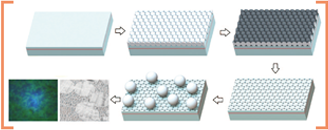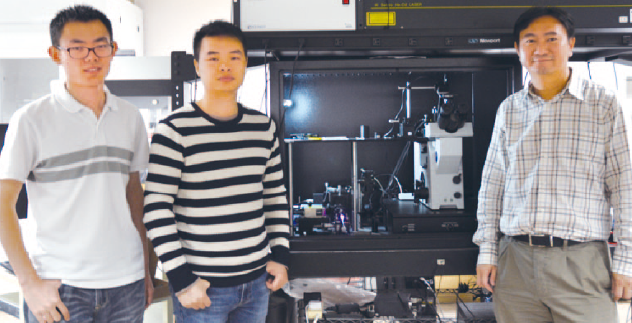Light, as one of the most common media of information transfer, is closely related to our daily life. From incandescent to solid-state
lighting based on light-emitting diodes (LEDs), artificial light sources keep on improving in terms of energy efficiency. Faced with
increasing energy shortages nowadays, LED technology has attracted much interest due to its significantly higher energy transfer
efficiency compared with traditional light sources. LEDs, being semiconductor devices based on the fundamental p-n junction, produce
light with the energy released during the radiative recombination processes of its carriers. By adjusting the band gap of the
semiconductor through a variety of means, different colours of light can be emitted. Though LEDs have higher energy utilization
efficiency compared with traditional light sources, a single LED chip emits only monochromatic (single-colour) light due to the fixed
band gap value of the respective semiconductor. This is far from meeting the requirements of the two major artificial lighting
applications: lighting and displaying, which need polychromatic light. The most commonly adopted solution today is the use of
phosphor materials to convert part of the emitted light into light of other colours at longer wavelengths. The trade-off of this approach
is unavoidable substantial energy losses during the colour conversion process, which in turn result in heat generation that further
reduces the internal quantum efficiencies of the LED. Also, the phosphor has a shorter lifetime than the LED chip itself, and degradation
of the phosphor causes the colour of the emitted light to gradually change throughout its lifespan.

Schematic diagrams showing the essential steps for the fabrication of polychromatic LED structures
|
|
It has been found that changes to the strain of a semiconductor
material will modify the energy band structure of the
semiconductor, which in turn will affect the colour of the
emitted light. The strain can be adjusted by non-uniform nano-structuring
of the quantum wells embedded in a LED chip,
making polychromatic emission from a single chip possible.
In our study, by using the nanosphere lithography (NSL) technique,
nano-rods of different diameters were fabricated on the surface
of an InGaN LED chip, which forms the heart of a typical LED light
bulb. The nano-rods penetrated into the quantum wells and
resulted in non-uniformly distributed strain. This gave rise to
localized emission properties across the emission area which were
studied at a nanoscale level using scanning near-field optical
microscopy (SNOM). Photoluminescence was used to study the
far-field emission of the chip. The microphotographs taken show
the dual-colour emitting nature of the nano-structured chips,
including green and blue, the combination that constitutes
polychromatic light. Further exploration of this technique to
develop whitelight-emitting chips is being investigated. This
technology may prove to be an important milestone towards
achieving single-chip non-phosphor polychromatic LED lighting
with high efficiency and reliability.

The research team comprises Mr Cong FENG, Dr Jian-an HUANG and Dr Hoi Wai CHOI (from left to right)
Dr Hoi Wai CHOI
Department of Electrical and
Electronic Engineering
The University of Hong Kong
hwchoi@hku.hk
|
